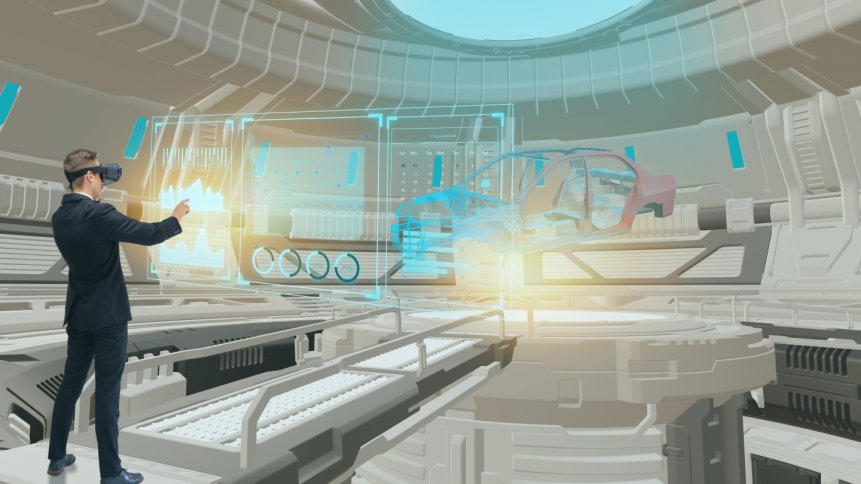Gaming engines ripe for industrial applications

Gaming engines have been key to the creation of immersive digital worlds that millions of players enjoy on Xbox consoles and Playstations the world over, but the story doesn’t end there. These powerful software development environments, which help programmers to quickly unlock realistic physics and leverage stunning graphics, are giving companies the edge in other commercial sectors too.
Digital transformation experts EX SQuared were quick to spot the opportunities up for grabs, writing as far back as 2014 that “game engines are serious business.” The US firm, headquartered in Austin, Texas, and with operations in Costa Rica, Peru and India, singled out a number of business areas as being ripe for gaming engines, including prototyping, virtual showrooms, home design, interactive learning, and medical training. Providing clients with a virtual world where they can approve design concepts, understand complex building structures, rehearse maintenance procedures – and much more besides – can save time, materials, and side-step incidents that would have proven costly or dangerous in real life.
Virtually unlimited
Fast forward to 2022 and the business world has no shortage of gaming engines to choose from. Leaders in the sector include Unity and Unreal Engine, which between them suit a vast range of platforms from the familiar such as Microsoft Windows, macOS, and Linux, through to up-and-coming environments designed to work with VR headsets. Examples in this wearable category are Oculus, HTC Vive, Samsung Gear, and HoloLens.
Virtual reality is nothing short of a ‘game changer’ in medical training. Systems allow medics to train together remotely and access a library of healthcare procedures, including new or rarely performed techniques. There are now hundreds of training modules available, but doctors can learn from each other too, with senior colleagues able to pass on their wisdom, virtually over the internet. Medical device makers have jumped on board as well, shifting to VR as a value-added environment for getting customers up to speed with their products. It’s a trend spotted by Matt Newport, a game developer, and Justin Barad, an orthopedic surgeon, who teamed up to found OssoVR – a San Francisco, US, based surgical training provider. And many share their vision – the company raised more than $27 million in venture funding last year.
Digital twins on the rise
Gaming engines are proving revolutionary in other sectors too, riding the giant wave of interest in industrial tools such as digital twins. These virtual clones of real products and processes allow engineers to tweak their designs without breaking anything, safely testing ideas ahead of deployment in the physical world. It’s thanks to the realism of gaming engines, supported by lightening fast graphics processors and pin-sharp computer monitors, that global giants such as Siemens are going all in on the approach.
Digital twins can be applied not just during prototyping, but also later in the development process to extract as much performance as possible, adjusting settings and optimizing each element in the design. Naturally, complex models will require some beefy hardware to spin up the results. But gaming engines suit iOS and Android operating systems too, bringing opportunities to mobile devices. And don’t forget that some of the heavy lifting can be shifted into the cloud, if required.
Added AI
Chip designer Arm, famous for its energy-efficient processors that have captured the imagination of smart device makers, including Apple, and many others, notes that gaming engines don’t just bring graphics, physics, sound and animation to the party – they offer AI capabilities as well. In a gaming setting, the AI engine can respond to a player’s movement – for example, by shifting the position of other characters or objects present on-screen. But enterprise users can leverage this to explore other phenomena such as traffic flowing around a city or people moving around a new building.
Gaming engine providers know that they must work closely with chip designers such as Arm to get the most out of their virtual environments. German developer Crytek – famous in the computer gaming world for its ‘Far Cry’ and ‘Crysis’ series – engineered its CryEngine in partnership with Arm, Samsung, and Google to deliver seamless performance on Android mobile devices. Giving app makers access to these powerful platforms is another shot in the arm to the immersive experience that’s possible on tablets and smartphones. And, inevitably, the benefits will pay off to enterprise users, allowing them to create more realistic environments for their clients. Today, CryEngine’s industrial applications include uses in architecture and health and safety training.
All-star line up
Hammering home the scale of the interest in gaming engines, Amazon – or more specifically, its cloud computing subsidiary, AWS – has stepped up its presence in the sector. The tech giant introduced its first offering in 2016 dubbed Lumberyard. As with other platforms, it was a much lower-cost alternative for users who would otherwise have to build the 3D tools themselves. Continuing its mission to “make free, world class 3D rendering tools accessible to everyone,” AWS has joined the Open 3D Foundation, which includes other big names such as Adobe, Huawei, Intel, Microsoft, Red Hat, and others. And the resulting Open 3D Engine (or O3DE for short) was made available earlier this year. The move throws even more weight behind the business prospects for gaming engines for companies of all sizes.









